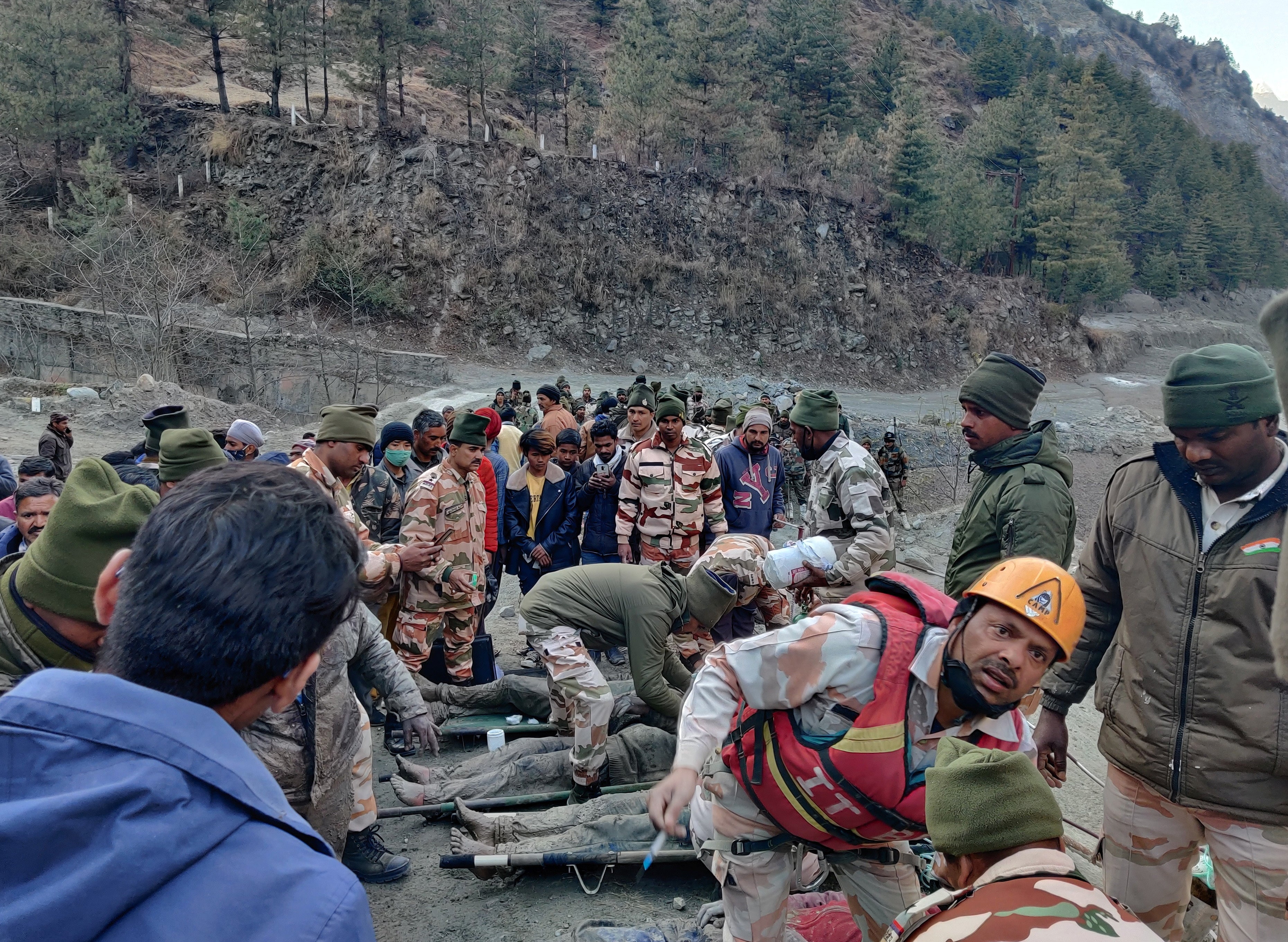It has never been more important to understand our place in the world
The precise cause of the flash flood is not known but the effects of the climate crisis have made already fragile ecosystems such as the Himalayan glaciers more prone to extreme events, writes Adam Withnall


In the Himalayan valley of northern India hit by a sudden and explosive deluge of ice and water, the frantic search for survivors continues.
At least 31 bodies have now been recovered and 165 people remain missing, after disaster struck in the state of Uttarakhand where, activist Vimal Bhai told us, the construction of hydropower projects has continued for years without full checks on the ecological impact.
The precise cause of Sunday’s flash flood is not known, but we are now certain that the effects of the climate crisis have made already fragile ecosystems such as the Himalayan glaciers more prone to extreme events like this.
Our coverage of this event from India was informed by the expertise and inputs of our new UK climate correspondent Daisy Dunne, who explained that a 2019 study shows the rate of glacier retreat in the Himalayas has doubled since the late-20th century.
Daisy and our US climate correspondent Louise Boyle will be a big part of the team involved with the Independent Climate section, launched on Tuesday – conducting their own investigations into the impacts and mitigation of a warming planet and contributing to international stories wherever the climate crisis is involved.
Nowhere is this more urgent and relevant than in Asia. Sunday’s disaster highlights the fact that Himalayan glaciers are not just smaller but also warmer than they were before.
Though still technically frozen, studies show the temperature of the ice in the glaciers is now about minus 2C, where earlier it would range between minus 6C and minus 20C. What this means in practice is that it only takes a small amount of unseasonal warming to trigger the release of a huge amount of the potential energy locked up in the Himalayan ranges.
The nations that share these mountains want to use that energy to fuel their industries, towns and cities. But when too much is released all at once – as happened on Sunday – it can have a devastating and deadly impact on anything that stands in its path.
Even under the most optimistic of global emissions models, such events are only going to become more common. Understanding how we all contribute to this worrying trend, and what we as individuals can do about it, has never been more important.
Yours,
Adam Withnall
Asia editor


Join our commenting forum
Join thought-provoking conversations, follow other Independent readers and see their replies
Comments